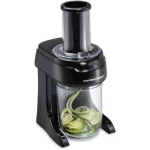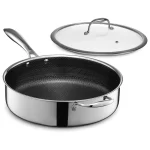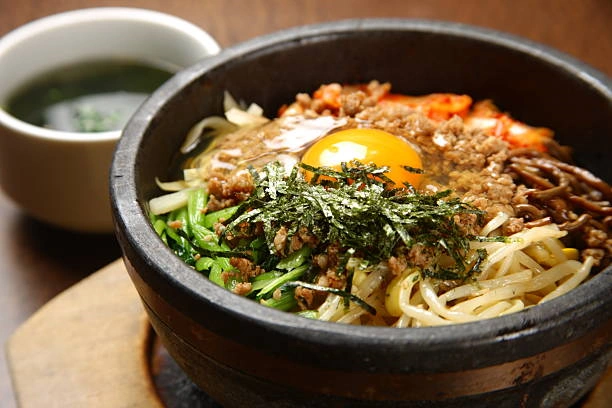Indulge in the sensational flavors of Korean cuisine with Bibimbap, a delightful and colorful mixed rice bowl that promises a symphony of tastes and textures in every bite. This iconic dish features an array of vibrant vegetables, savory protein, and a spicy-sweet gochujang sauce, all beautifully arranged atop a bed of steaming hot rice. With each component carefully prepared and combined, Bibimbap offers a harmonious blend of freshness and bold flavors that will tantalize your taste buds. Get ready to experience a culinary journey through the diverse and delicious world of Korean food with this traditional and beloved dish.

What are the benefits of Bibimbap (Mixed Rice Bowl)?
Bibimbap, an enticing harmony of vibrant colors and flavors, captivates both the palate and the senses. This celebrated Korean dish offers a myriad of benefits beyond its culinary delight. The symphony of fresh vegetables, savory meat, and a perfectly cooked egg not only pleases the taste buds but also provides a balanced nutritional profile packed with vitamins, minerals, and antioxidants.
Moreover, Bibimbap’s versatility extends beyond its delightful taste. It serves as a culinary canvas for creativity, allowing for personalization based on individual preferences. This dish fosters a sense of connection and community, encouraging shared culinary experiences and the exploration of diverse flavors. Whether relished for its healthful ingredients, gastronomic appeal, or social bonding, Bibimbap stands as a testament to the artistry and richness of Korean cuisine.

Step into kitchen right now!!! Let’s try Bibimbap (Mixed Rice Bowl) together!!!
Step 1:Prepare the Rice
Rinse the rice under cold water until the water runs clear. Cook the rice in a rice cooker with 2 1/4 cups of water. If you don’t have a rice cooker, bring the rice and water to a boil in a pot, then reduce heat to low, cover, and simmer for 15-20 minutes until rice is cooked. Let it sit for another 10 minutes before fluffing with a fork.

Step 2:Prepare the Vegetables
- Carrots: Sauté the julienned carrots in a pan with a little oil over medium heat for 3-4 minutes until tender.
- Zucchini: Sauté the julienned zucchini in the same manner until tender, about 3-4 minutes.
- Spinach: Blanch the spinach in boiling water for 1 minute, then drain and rinse under cold water. Squeeze out excess water and season with a pinch of salt and a few drops of sesame oil.
- Bean Sprouts: Blanch the bean sprouts in boiling water for 2-3 minutes, then drain and rinse under cold water. Season with a pinch of salt and a few drops of sesame oil.
- Mushrooms: Sauté the sliced shiitake mushrooms in a pan with a little oil until soft, about 5 minutes. Season with a pinch of salt.
- Radish and Cucumber: No need to cook, just julienne and set aside.

Step 3:Prepare the Beef
In a bowl, marinate the thinly sliced beef with minced garlic, soy sauce, sesame oil, salt, and pepper for at least 30 minutes. Sauté the marinated beef in a pan over medium-high heat until cooked through, about 5-7 minutes.

Step 4:Prepare the Sauce
In a small bowl, mix together the gochujang, sesame oil, sugar, water, vinegar, roasted sesame seeds, and minced garlic until well combined.

Step 5:Fry the Eggs
In a non-stick pan, fry the eggs sunny-side up or to your desired doneness.

Step 6:Assemble the Bibimbap
Place a serving of cooked rice in each bowl. Arrange the cooked vegetables, beef, and raw cucumber and radish on top of the rice in sections. Place a fried egg in the center of each bowl. Drizzle with the prepared sauce. Garnish with toasted sesame seeds, sliced green onions, and nori strips.

Step 7:Serve and Enjoy
To eat, mix everything together in the bowl until well combined. Enjoy your Bibimbap!

In conclusion, Bibimbap is a delightful and satisfying dish that exemplifies the richness and diversity of Korean cuisine. With its colorful presentation and flavorful combination of ingredients, it offers a delicious and healthy meal that is perfect for any occasion. Whether you are a seasoned foodie or a novice cook, Bibimbap is a great way to introduce yourself to the vibrant and complex flavors of Korean cuisine. So why not give it a try and see for yourself why this dish has become a beloved and iconic symbol of Korean food culture? Fill up your bowl, mix up the rice, and enjoy a delicious and wholesome dining experience today!
Print
Bibimbap (Mixed Rice Bowl)
- Total Time: 50minutes
Description
Bibimbap, an enticing harmony of vibrant colors and flavors, captivates both the palate and the senses. This celebrated Korean dish offers a myriad of benefits beyond its culinary delight. The symphony of fresh vegetables, savory meat, and a perfectly cooked egg not only pleases the taste buds but also provides a balanced nutritional profile packed with vitamins, minerals, and antioxidants.
Ingredients
For the Rice:
- 2 cups short-grain rice
- 2 1/4 cups water
For the Vegetables and Protein:
- 1 cup julienned carrots
- 1 cup julienned zucchini
- 1 cup spinach
- 1 cup bean sprouts
- 1 cup shiitake mushrooms, sliced
- 1 cup Korean radish, julienned
- 1 cup cucumber, julienned
- 4 eggs
- 200g beef (rib eye or sirloin), thinly sliced
- 2 cloves garlic, minced
- 2 tablespoons soy sauce
- 1 tablespoon sesame oil
- Salt and pepper to taste
For the Sauce:
- 2 tablespoons gochujang (Korean chili paste)
- 1 tablespoon sesame oil
- 1 tablespoon sugar
- 1 tablespoon water
- 1 tablespoon vinegar
- 1 tablespoon roasted sesame seeds
- 1 teaspoon minced garlic
Instructions
Step 1: Prepare the Rice
- Rinse the rice under cold water until the water runs clear.
- Cook the rice in a rice cooker with 2 1/4 cups of water. If you don’t have a rice cooker, bring the rice and water to a boil in a pot, then reduce heat to low, cover, and simmer for 15-20 minutes until rice is cooked. Let it sit for another 10 minutes before fluffing with a fork.
Step 2:Prepare the Vegetables
- Carrots: Sauté the julienned carrots in a pan with a little oil over medium heat for 3-4 minutes until tender.
- Zucchini: Sauté the julienned zucchini in the same manner until tender, about 3-4 minutes.
- Spinach: Blanch the spinach in boiling water for 1 minute, then drain and rinse under cold water. Squeeze out excess water and season with a pinch of salt and a few drops of sesame oil.
- Bean Sprouts: Blanch the bean sprouts in boiling water for 2-3 minutes, then drain and rinse under cold water. Season with a pinch of salt and a few drops of sesame oil.
- Mushrooms: Sauté the sliced shiitake mushrooms in a pan with a little oil until soft, about 5 minutes. Season with a pinch of salt.
- Radish and Cucumber: No need to cook, just julienne and set aside.
Step 3:Prepare the Beef
- In a bowl, marinate the thinly sliced beef with minced garlic, soy sauce, sesame oil, salt, and pepper for at least 30 minutes.
- Sauté the marinated beef in a pan over medium-high heat until cooked through, about 5-7 minutes.
Step 4:Prepare the Sauce
- In a small bowl, mix together the gochujang, sesame oil, sugar, water, vinegar, roasted sesame seeds, and minced garlic until well combined.
Step 5:Fry the Eggs
- In a non-stick pan, fry the eggs sunny-side up or to your desired doneness.
Step 6:Assemble the Bibimbap
- Place a serving of cooked rice in each bowl.
- Arrange the cooked vegetables, beef, and raw cucumber and radish on top of the rice in sections.
- Place a fried egg in the center of each bowl.
- Drizzle with the prepared sauce.
- Garnish with toasted sesame seeds, sliced green onions, and nori strips.
Step 7:Serve and Enjoy
- To eat, mix everything together in the bowl until well combined. Enjoy your Bibimbap!
Equipment
 Buy Now →
Buy Now →  Buy Now →
Buy Now → 
Make 75% commission with Cooking Tips!
Buy Now →
TOSHIBA Rice Cooker Small 3 Cup Uncooked
Buy Now →
Joseph Joseph Nest 100 Prep & Store Mixing Bowl Set
Buy Now →
CUCKOO CR-0675F | 6-Cup (Uncooked) Micom Rice Cooker
Buy Now →
Hamilton Beach 3-in-1 Electric Vegetable Spiralizer for Veggie Noodles
Buy Now →
Granitestone 14 Inch Family Size Nonstick Frying Pan
Buy Now →
HexClad Hybrid Nonstick 5.5 Qt Deep Sauté Pan and Lid
Buy Now →Notes
- Prep Time: 30minutes
- Cook Time: 20minutes
- Category: RECIPE,HEALTHY,OCCASION
-
How can you achieve the perfect balance of textures and flavors in Bibimbap?
To achieve a harmonious blend of textures and flavors in Bibimbap, ensure that each ingredient is prepared and seasoned individually before assembling the dish. This ensures that every component contributes to the overall taste profile without overpowering the others.
-
How can you elevate the visual appeal of Bibimbap for a stunning presentation?
To enhance the visual appeal of Bibimbap, arrange the colorful ingredients in an aesthetically pleasing manner on top of a bed of warm rice. Pay attention to the placement of each component to create a vibrant and inviting presentation that entices both the eye and the palate.
-
How can you customize Bibimbap to suit different dietary preferences or restrictions?
To cater to different dietary preferences or restrictions, consider offering a variety of toppings and sauces that allow diners to personalize their Bibimbap experience. Options like tofu, mushrooms, or different types of vegetables can be added to accommodate vegetarian or vegan diets, while adjusting the level of spice or omitting certain ingredients can cater to individual taste preferences or allergies.














Thanks for sharing this guide.Bibimbap has always been my go-to dish in Korean restaurants and now I can finally try making it at home. The steps and suggestions in the article are clear and I’m already following ~ asking for updates!
Cooking rice with the TOSHIBA Rice Cooker Small 3 Cup Uncooked is just so convenient, a lazy person’s savior!
Granitestone 14-inch home size nonstick skillet is so perfect for me, a must have for omelette lovers, trust me!
The Joseph Joseph Nest 100 Prep & Store Mixing Bowl Set is perfect for mixing things up! Perfect for Korean Bibimbap!
The CUCKOO CR-0675F Micom Rice Cooker has worked well enough to get my mom’s approval…
I won’t allow anyone else to have a kitchen without the HexClad Hybrid 5.5 Quart Non-Stick Pan and Lid, highly recommended!